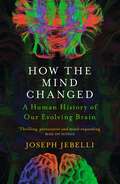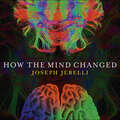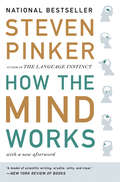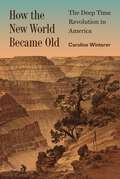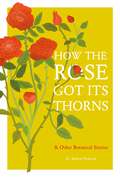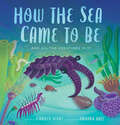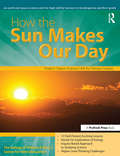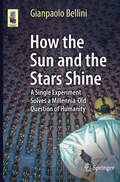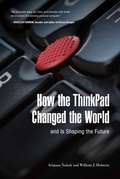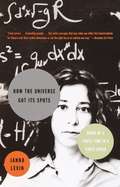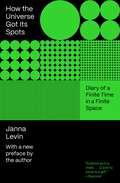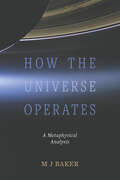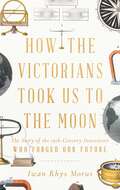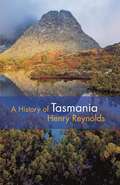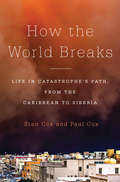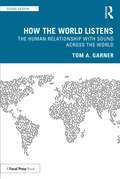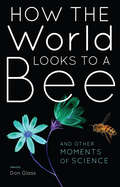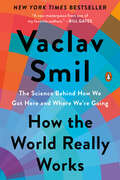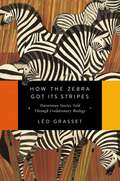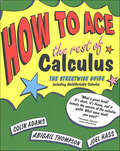- Table View
- List View
How the Mind Changed: A Human History of our Evolving Brain
by Joseph JebelliThe extraordinary story of how the human brain evolved... and is still evolving. We've come a long way. The earliest human had a brain as small as a child's fist; ours are four times bigger, with spectacular abilities and potential we are only just beginning to understand.This is How the Mind Changed, a seven-million-year journey through our own heads, packed with vivid stories, groundbreaking science, and thrilling surprises. Discover how memory has almost nothing to do with the past; meditation rewires our synapses; magic mushroom use might be responsible for our intelligence; climate accounts for linguistic diversity; and how autism teaches us hugely positive lessons about our past and future.Dr Joseph Jebelli's In Pursuit of Memory was shortlisted for the Royal Society Science Book Prize and longlisted for the Wellcome. In this, his eagerly awaited second book, he draws on deep insights from neuroscience, evolutionary biology, psychology, and philosophy to guide us through the unexpected changes that shaped our brains. From genetic accidents and environmental forces to historical and cultural advances, he explores how our brain's evolution turned us into Homo sapiens and beyond.A single mutation is all it takes.
How the Mind Changed: A Human History of our Evolving Brain
by Joseph JebelliThe extraordinary story of how the human brain evolved by Royal Society Prize shortlisted neuroscientist, Joseph Jebelli.No other life form on the planet has generated a brain like ours. How did a bundle of cells weighing just 1.2 kg give rise to conscious, self-aware beings capable of understanding time, language, mathematics and music, of exploring outer space and sequencing their own DNA? The answer to such questions is a 7 million year saga. How the Mind Changed is the definitive audiobook on human brain evolution: a sweeping natural history. Beginning with the first primate brain and the rise of our present-day, large human brain, it will describe the remarkable origin of our species' most mysterious organ, how it has developed, and how it will change in the future. To study the brain is to study the essence of what makes us human.(P) 2022 Hodder & Stoughton Limited
How the Mind Works
by Steven Pinker"A model of scientific writing: erudite, witty, and clear." --New York Review of Books In this Pulitzer Prize finalist and national bestseller, one of the world's leading cognitive scientists tackles the workings of the human mind. What makes us rational--and why are we so often irrational? How do we see in three dimensions? What makes us happy, afraid, angry, disgusted, or sexually aroused? Why do we fall in love? And how do we grapple with the imponderables of morality, religion, and consciousness? ?How the Mind Works? synthesizes the most satisfying explanations of our mental life from cognitive science, evolutionary biology, and other fields to explain what the mind is, how it evolved, and how it allows us to see, think, feel, laugh, interact, enjoy the arts, and contemplate the mysteries of life. This new edition of Pinker's bold and buoyant classic is updated with a new foreword by the author.
How the New World Became Old: The Deep Time Revolution in America (Princeton Modern Knowledge #1)
by Caroline WintererHow the idea of deep time transformed how Americans see their country and themselvesDuring the nineteenth century, Americans were shocked to learn that the land beneath their feet had once been stalked by terrifying beasts. T. rex and Brontosaurus ruled the continent. North America was home to saber-toothed cats and woolly mammoths, great herds of camels and hippos, and sultry tropical forests now fossilized into massive coal seams. How the New World Became Old tells the extraordinary story of how Americans discovered that the New World was not just old—it was a place rooted in deep time.In this panoramic book, Caroline Winterer traces the history of an idea that today lies at the heart of the nation&’s identity as a place of primordial natural beauty. Europeans called America the New World, and literal readings of the Bible suggested that Earth was only six thousand years old. Winterer takes readers from glacier-capped peaks in Yosemite to Alabama slave plantations and canal works in upstate New York, describing how naturalists, explorers, engineers, and ordinary Americans unearthed a past they never suspected, a history more ancient than anyone ever could have imagined.Drawing on archival evidence ranging from unpublished field notes and letters to early stratigraphic diagrams, How the New World Became Old reveals how the deep time revolution ushered in profound changes in science, literature, art, and religion, and how Americans came to realize that the New World might in fact be the oldest world of all.
How the Rose Got Its Thorns: And Other Botanical Stories
by Dr Andrew OrmerodHave you ever wondered why the rose has thorns and other flowers don't; why the daffodil is the colour it is; or why some plants have shiny leaves and others matt?How The Rose Got its Thorns reveals the inner workings of our favourite flowers and trees. Designed to help gardeners, both novice and experienced, better understand how plants grow, the book is easy to navigate - it is divided into 50 chapters, each one a story.Accompanied by specially commissioned colour illustrations, each chapter explains the science behind how plants work and the extraordinary processes they have evolved: such as protecting themselves from predators using chemicals; attracting pollinators using scent, shape and colour; growing in low or high temperatures; their relationship with the wind; the size and pattern of their leaves; the distribution of their seeds and survival strategies; their relationship with insects; how they allocate their resources; and how they retain water efficiently.This delightful and intriguing book offers readers an accessible way to better understand how our plants evolved into the species of today.
How the Rose Got Its Thorns: And Other Botanical Stories
by Dr Andrew OrmerodHave you ever wondered why the rose has thorns and other flowers don't; why the daffodil is the colour it is; or why some plants have shiny leaves and others matt?How The Rose Got its Thorns reveals the inner workings of our favourite flowers and trees. Designed to help gardeners, both novice and experienced, better understand how plants grow, the book is easy to navigate - it is divided into 50 chapters, each one a story.Accompanied by specially commissioned colour illustrations, each chapter explains the science behind how plants work and the extraordinary processes they have evolved: such as protecting themselves from predators using chemicals; attracting pollinators using scent, shape and colour; growing in low or high temperatures; their relationship with the wind; the size and pattern of their leaves; the distribution of their seeds and survival strategies; their relationship with insects; how they allocate their resources; and how they retain water efficiently.This delightful and intriguing book offers readers an accessible way to better understand how our plants evolved into the species of today.
How the Sea Came to Be: (And All the Creatures In It)
by Jennifer BerneA lyrical, spectacular history of the ocean—from its dramatic evolutionary past to its marvelously biodiverse present.&“For millions of years these first bits of lifeBecame more, and then more, and then more.&”Long, long ago, when the Earth was young and new, the world was a fiery place. Volcanoes exploded from deep down below, and steamy, hot clouds rose up high. Rain poured down for thousands of years, filling the world&’s very first oceans. There the teeniest stirrings of life began. Earth&’s creatures grew bigger and bigger, evolving into exciting forms like jellyfish, coral, and worms. Millions of years passed. Down in the depths and up on the surface, ocean life grew and spread. Now the sea teems with all kinds of animals—squid, turtles, dolphins, barracudas, even glowing fish, all living in the waters where long, long ago, life itself came to be. Spanning 4.5 billion years of evolution, this extensively researched book is an accessible introduction to geology, oceanography, and marine biology. Entrancing verse, awe-inspiring art, and fascinating back matter capture the mysterious beauty of the ocean and the incredible organisms who call it home.
How the Snake Lost its Legs: Curious Tales from the Frontier of Evo-Devo
by Lewis I. Held Jr.How did the zebra really get its stripes, and the giraffe its long neck? What is the science behind camel humps, leopard spots, and other animal oddities? Such questions have fascinated us for centuries, but the expanding field of evo-devo (evolutionary developmental biology) is now providing, for the first time, a wealth of insights and answers. Taking inspiration from Kipling's 'Just So Stories', this book weaves emerging insights from evo-devo into a narrative that provides startling explanations for the origin and evolution of traits across the animal kingdom. Held's unique and engaging style makes this narrative both enlightening and entertaining, guiding students and researchers through even complex concepts and encouraging a fuller understanding of the latest developments in the field. The first five chapters cover the first bilaterally symmetric animals, flies, butterflies, snakes, and cheetahs. A final chapter surveys recent results about a menagerie of other animals.
How the Sparrow Learned Its Song (Inheritance and Traits)
by Ashley Chase Ari Krakowski Channon JacksonNIMAC-sourced textbook
How the Sun Makes Our Day: An Earth and Space Science Unit for High-Ability Learners in Grades K-1
by Clg Of William And Mary/Ctr Gift EdHow the Sun Makes Our Day, an Earth and space science unit for grades K-1, engages students in investigations and observations about the sun as a source of light and energy, the nature of shadows, man-made sources of energy, and the need for humans to conserve natural resources.How the Sun Makes Our Day was developed by the Center for Gifted Education at The College of William and Mary to offer advanced curriculum supported by years of research. The Center's materials have received national recognition from the United States Department of Education and the National Association for Gifted Children, and they are widely used both nationally and internationally.Each of the books in this series offers curriculum that focuses on advanced content and higher level processes. The science units contain simulations of real-world problems, and students experience the work of real science by using data-handling skills, analyzing information, and evaluating results. The mathematics units provide sophisticated ideas and concepts, challenging extensions, higher order thinking skills, and opportunities for student exploration based on interest. These materials are a must for any teacher seeking to challenge and engage learners and increase achievement.Grades K-1
How the Sun and the Stars Shine: A Single Experiment Solves a Millennia-Old Question of Humanity (Astronomers' Universe)
by Gianpaolo BelliniThis book presents the story of an experiment with historical significance that, for the first time, uncovered the mechanisms responsible for solar energy production and those generating energy in massive stars. The results were obtained by directly measuring the neutrino fluxes produced by individual fusion reactions in the Sun and providing the initial evidence of nuclear reactions occurring in massive stars via the CNO cycle. The CNO cycle is theorized to be the primary channel for hydrogen burning in stars more massive than the Sun and is, in fact, the primary channel for hydrogen burning in the Universe. These groundbreaking discoveries stem from a singular 32-year experiment, spanning from 1990 to 2021. The book commences with the experiment's genesis, placing it within the historical context of astrophysics and astroparticle physics. It then delves into the detector's conceptualization, gently describing the techniques used and addressing the challenges in constructing the detector. The narrative is presented in a simple and popular style, maintaining rigorous scientific adherence to the obtained results. The book is intended for a general audience not necessarily familiar with science, especially physics, but with a curiosity and interest in astrophysics. It aims to reach those who may be unaware of the complexities involved in conducting a scientific experiment, particularly one pushing the limits of feasibility. Additionally, it may appeal to those interested in amateur physics or astrophysics. The core novelty of the book lies in its detailed exploration of an experiment, encompassing scientific, cultural, personal, and even sociological dimensions.
How the ThinkPad Changed the World—and Is Shaping the Future
by William Holstein Arimasa NaitohThe ThinkPad notebook computer has been at the center of the digital revolution that has transformed millions of lives around the world, allowing users to obtain access to their documents, pictures and other personal data from virtually anywhere at any time. More than 100 million ThinkPads have been sold since they were introduced in 1992, some twenty-five years ago. ThinkPads played a prominent role in NASA's space exploration and at the International Space Station. They accompanied explorers who traversed the entire length of the Nile River and conquered Mount Everest. ThinkPads also played a major role in changing the very architecture of how humanity's knowledge is stored and made available.In this book, Arimasa Naitoh, the father of the ThinkPad, collaborates with American business journalist and author William J. Holstein to write candidly about the incredible technological and personal struggles he and fellow engineers faced. And he offers his vision of the future of mobile computing—because this revolution is not even close to being finished.
How the Universe Got Its Spots: Diary of A Finite Time in A Finite Space
by Janna LevinIs the universe infinite or just really big? With this question, the gifted young cosmologist Janna Levin not only announces the central theme of her intriguing and controversial new book but establishes herself as one of the most direct and unorthodox voices in contemporary science. For even as she sets out to determine how big "really big" may be, Levin gives us an intimate look at the day-to-day life of a globe-trotting physicist, complete with jet lag and romantic disturbances. Nimbly synthesizing geometry, topology, chaos and string theories, Levin shows how the pattern of hot and cold spots left over from the big bang may one day reveal the size and shape of the cosmos. She does so with such originality, lucidity--and even poetry--that How the Universe Got Its Spots becomes a thrilling and deeply personal communication between a scientist and the lay reader.
How the Universe Got Its Spots: Diary of a Finite Time in a Finite Space
by Janna LevinIs the universe infinite, or is it just really big? Does nature abhor infinity? In startling and beautiful prose, Janna Levin's diary of unsent letters to her mother describes what we know about the shape and extent of the universe, about its beginning and its end. She grants the uninitiated access to the astounding findings of contemporary theoretical physics and makes tangible the contours of space and time—those very real curves along which apples fall and planets orbit.Levin guides the reader through the observations and thought-experiments that have enabled physicists to begin charting the universe. She introduces the cosmic archaeology that makes sense of the pattern of hot spots left over from the big bang, a pursuit on the verge of discovering the shape of space itself. And she explains the topology and the geometry of the universe now coming into focus—a strange map of space full of black holes, chaotic flows, time warps, and invisible strings. Levin advances the controversial idea that this map is edgeless but finite—that the universe is huge but not unending—a radical revelation that would provide the ultimate twist to the Copernican revolution by locating our precise position in the cosmos.As she recounts our increasingly rewarding attempt to know the universe, Levin tells her personal story as a scientist isolated by her growing knowledge. This book is her remarkable effort to reach across the distance of that knowledge and share what she knows with family and friends—and with us. Highly personal and utterly original, this physicist’s diary is a breathtaking contemplation of our deep connection with the universe and our aspirations to comprehend it.
How the Universe Operates: A Metaphysical Analysis
by M J BakerWhy do the heavenly bodies behave in a contrary fashion to what we are familiar with on earth? Before a wheel can turn, we must ensure rim is joined to axle; before a couple can dance in circle, their hands must be joined. In contrast, the planets circle the sun and the moons circle the planets without any securing mechanism, and so precisely that their movements can be predicted to a millisecond. Again, why is it that, released from the effects of gravity, emollient matter like water or molten lead forms spontaneously into tiny globes, copying the form found in stars, planets and the sun? Are the tides satisfactorily explained by the thesis of gravitational ‘pull’ of moon and sun? If so, why does modern science have such difficulty reconciling the relative influences of these two bodies? What sort of reality is light, and why is the speed of light fixed and not infinite, at least in space? Answers to these and other questions may be found through recourse to the philosophy of Aristotle. The thinkers of the Enlightenment chose to discard Aristotle’s limited natural science. That was understandable. But they chose to discard his philosophy as well. This was unwise, as fresh study of Aristotle’s thinking will show.
How the Vertebrate Brain Regulates Behavior: Direct from the Lab
by Donald PfaffThroughout his career, Donald Pfaff has demonstrated that by choosing problems and methods with care, biologists can study the molecular mechanisms of brains more complex than those of fruit flies, snails, and roundworms. He offers a close-up, conversational perspective on a 50-year quest to understand how behavior is regulated in vertebrates.
How the Victorians Took Us to the Moon: The Story of the 19th-Century Innovators Who Forged Our Future
by Iwan Rhys MorusThe rich and fascinating history of the scientific revolution of the Victorian Era, leading to transformative advances in the twentieth and twenty-first centuries.The Victorians invented the idea of the future. They saw it as an undiscovered country, one ripe for exploration and colonization. And to get us there, they created a new way of ordering and transforming nature, built on grand designs and the mass-mobilization of the resources of the British Empire. With their expert culture of accuracy and precision, they created telegraphs and telephones, electric trams and railways, built machines that could think, and devised engines that could reach for the skies. When Cyrus Field&’s audacious plan to lay a telegraph cable across the Atlantic finally succeeded in 1866, it showed how science, properly disciplined, could make new worlds. As crowds flocked to the Great Exhibition of 1851 and the exhibitions its success inaugurated, they came to see the future made fact—to see the future being built before their eyes. In this rich and absorbing book, a distinguished historian of science tells the story of how this future was made. From Charles Babbage&’s dream of mechanizing mathematics to Isambard Kingdom Brunel&’s tunnel beneath the Thames to George&’s Cayley&’s fantasies of powered flight and Nikola Tesla&’s visions of an electrical world, it is a story of towering personalities, clashing ambitions, furious rivalries and conflicting cultures—a rich tapestry of remarkable lives that transformed the world beyond recognition and ultimately took mankind to the Moon
How the Weak Win Wars: A Theory of Asymmetric Conflict
by Ivan Arreguín-ToftHow do the weak defeat the strong? Ivan Arreguín-Toft argues that, although many factors affect asymmetric conflict outcomes (for example, the relative power of the actors, their weapons technology, and outside support), the interaction of each actor's strategy is the best explanation. Supporting his argument with combined statistical and comparative case study analysis, Arreguín-Toft's strategic interaction theory has implications not only for international relations theorists, but for policy makers grappling with interstate and civil wars, as well as terrorism.
How the World Breaks: Life in Catastrophe's Path, from the Caribbean to Siberia
by Stan Cox Paul CoxWe've always lived on a dangerous planet, but its disasters aren't what they used to be. How the World Breaks gives us a breathtaking new view of crisis and recovery on the unstable landscapes of the Earth's hazard zones. Father and son authors Stan and Paul Cox take us to the explosive fire fronts of overheated Australia, the future lost city of Miami, the fights over whether and how to fortify New York City in the wake of Sandy, the Indonesian mud volcano triggered by natural gas drilling, and other communities that are reimagining their lives after quakes, superstorms, tornadoes, and landslides.In the very decade when we should be rushing to heal the atmosphere and address the enormous inequalities of risk, a strange idea has taken hold of global disaster policy: resilience. Its proponents say that threatened communities must simply learn the art of resilience, adapt to risk, and thereby survive. This doctrine obscures the human hand in creating disasters and requires the planet's most beleaguered people to absorb the rush of floodwaters and the crush of landslides, freeing the world economy to go on undisturbed. The Coxes' great contribution is to pull the disaster debate out of the realm of theory and into the muck and ash of the world's broken places. There we learn that change is more than mere adaptation and life is more than mere survival. Ultimately, How the World Breaks reveals why--unless we address the social, ecological, and economic roots of disaster--millions more people every year will find themselves spiraling into misery. It is essential reading for our time.
How the World Listens: The Human Relationship with Sound across the World (Sound Design)
by Tom A. GarnerHow the World Listens explores our everyday and professional interactions with sound. The book aims to uncover the human relationship with sound across the world and to reveal practical ways in which a better understanding of listening can help us in our daily lives. This book asks how sound is perceived, expressed and interacted with in both remarkably similar and dramatically different ways across the world. Using findings from a new scientific study, conducted exclusively for this book, we embark on a globe-trotting adventure across more than thirty countries, through exclusive interviews with more than fifty individuals from all walks of life, from acousticians and film composers to human resource managers and costumiers. How the World Listens is essential reading for anyone with an interest in human relationships with sound, including but not limited to sound design and music composition professionals, teachers and researchers.
How the World Looks to a Bee: And Other Moments of Science
by Don GlassGet a buzz out of science with a collection of fun facts and explanations of the world around us from the author of How Can You Tell if a Spider Is Dead?What can you learn about your world in just a moment? Have you ever wondered why the sky is blue? Or whether dogs can read our facial expressions? Don Glass and experts in their fields answer these questions and many more. Written for readers of all ages with no background in science required, How the World Looks to a Bee is the perfect armchair companion for curious people who want to know more about the science of everyday life but have only a moment to spare. With intriguing everyday phenomena as a starting point, this entertaining collectionuses short tutorials and quick and simple experiments to invite readers to test the science for themselves. These fascinating and topical science stories are sure to delight the curious child in all of us.
How the World Really Works: The Science Behind How We Got Here and Where We're Going
by Vaclav SmilINSTANT NEW YORK TIMES BESTSELLER&“A new masterpiece from one of my favorite authors… [How The World Really Works] is a compelling and highly readable book that leaves readers with the fundamental grounding needed to help solve the world&’s toughest challenges.&”—Bill Gates &“Provocative but perceptive . . . You can agree or disagree with Smil—accept or doubt his &‘just the facts&’ posture—but you probably shouldn&’t ignore him.&”—The Washington PostAn essential analysis of the modern science and technology that makes our twenty-first century lives possible—a scientist's investigation into what science really does, and does not, accomplish.We have never had so much information at our fingertips and yet most of us don&’t know how the world really works. This book explains seven of the most fundamental realities governing our survival and prosperity. From energy and food production, through our material world and its globalization, to risks, our environment and its future, How the World Really Works offers a much-needed reality check—because before we can tackle problems effectively, we must understand the facts. In this ambitious and thought-provoking book we see, for example, that globalization isn&’t inevitable—the foolishness of allowing 70 per cent of the world&’s rubber gloves to be made in just one factory became glaringly obvious in 2020—and that our societies have been steadily increasing their dependence on fossil fuels, such that any promises of decarbonization by 2050 are a fairy tale. For example, each greenhouse-grown supermarket-bought tomato has the equivalent of five tablespoons of diesel embedded in its production, and we have no way of producing steel, cement or plastics at required scales without huge carbon emissions. Ultimately, Smil answers the most profound question of our age: are we irrevocably doomed or is a brighter utopia ahead? Compelling, data-rich and revisionist, this wonderfully broad, interdisciplinary guide finds faults with both extremes. Looking at the world through this quantitative lens reveals hidden truths that change the way we see our past, present and uncertain future.
How the Zebra Got Its Stripes: Darwinian Stories Told Through Evolutionary Biology
by Barbara Mellor Léo GrassetFrance’s brightest young scientist lucidly explains the intricacies of the animal kingdom through the lens of evolutionary biology. Why do giraffes have such long necks? Why are zebras striped? And why does the clitoris of the female hyena exactly resemble and in most respects function like the male's penis? Deploying the latest scientific research and his own extensive observations in Africa, Léo Grasset offers answers to these questions and many more in a book of post-Darwinian. Complex natural phenomena are explained in simple and at times comic terms, as Grasset turns evolutionary biology to the burning questions of the animal kingdom, from why elephants prefer dictators and buffaloes democracies, to whether the lion really is king. The human is, of course, just another animal, and the author's exploration of two million years of human evolution shows how it not only informs our current habits and behavior, but also reveals that we are hybrids of several different species. Prepare to be fascinated, shocked, and delighted, as well as reliably advised—by the end, you will know to never hug the beautiful, cuddly honey badger, and what explains its almost psychotic nastiness. This is serious science at its entertaining best.
How things work (Readers Are Leaders Ser.)
by Elizabeth Eagar Connie SeptemberHome Language Grade 5 Graded Reader
How to Ace the Rest of Calculus: The Streetwise Guide (How to Ace)
by Joel Hass Colin Adams Abigail ThompsonThe sequel to How to Ace Calculus, How to Ace the Rest of Calculus provides humorous and highly readable explanations of the key topics of second and third semester calculus-such as sequences and series, polor coordinates, and multivariable calculus-without the technical details and fine print that would be found in a formal text.
